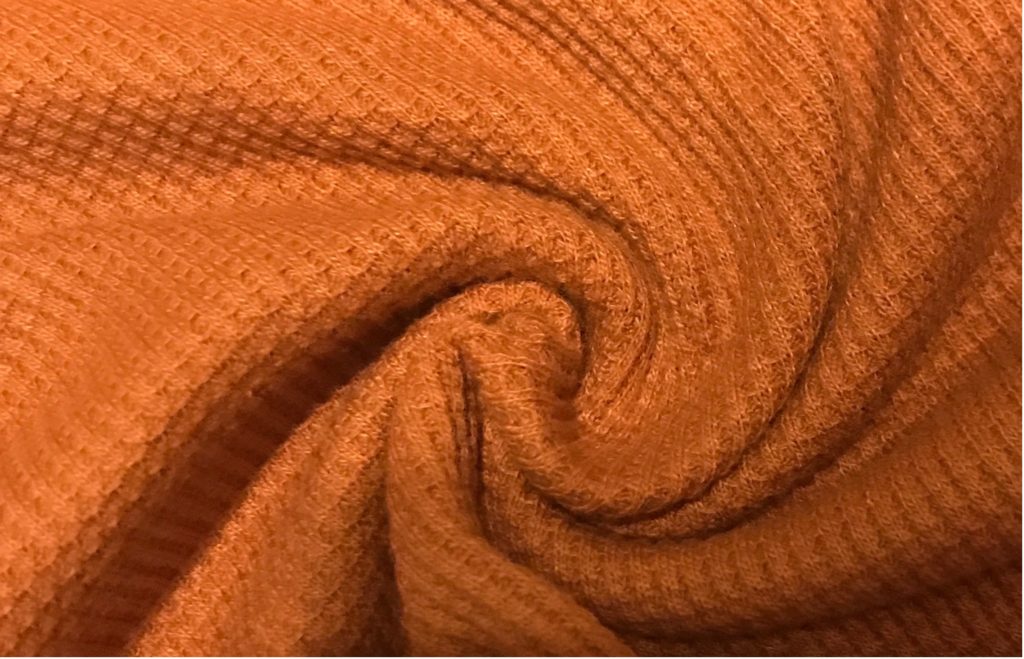
Nowadays, so many clothing items mention that they use moisture wicking fabric, but what does moisture wicking mean??
Moisture wicking is a technology used in certain fabrics to get rid of the sweat from the skin as well as the clothing.
It takes the sweat that the skin produces, and through the use of capillaries, moves the sweat to the outer surface of the clothing.
This helps keep the skin dry. It also keeps the cloth dry.
It’s very useful for socks, working out or any outdoor activity since it keeps the skin (and body) dry.
Its also pretty comfortable since your shirts or socks don’t stick to your skin.
How Moisture-Wicking Fabrics Work?
Polyester, as you know, is a synthetic fiber. It’s made using chemicals.
Scientists engineer the moisture wicking fabric by adding capillaries to the polyester fabric that moves the sweat from internal surface to the outer surface.
When the sweat is touches the internal side of the cloth, the liquid pressure forces the sweat into the spaces between the capillaries in the fabric.
This in turn creates capillary force which forces the liquid out to the outer surface.
The air then helps with drying the outer surface.
This is why moisture wicking fabric only absorbs 0.4% of the water (sweat) where as cotton absorbs 7% of the liquid!
This is why a lot of people avoid 100% cotton shirts/socks for working out, especially if they don’t like getting sweaty.
Fun fact: An average human has anywhere between 2 million to 4 million sweat glands!
How is Moisture Wicking Fabric different from Moisture Absorbing Fabric?
Moisture wicking fabric does not absorb any moisture.
However, Moisture Absorbing fabric (such as cotton or wool) absorb the sweat and stops it from reaching the outer surface as much as possible.
Since wicking fabric does not absorb water, it would be a terrible idea to wear a moisture wicking undershirt.
This is because an undershirt would then transfer the sweat from your body to your outer shirt, creating stains and ruining the shirt!
Fun fact: Humans, primates (apes/monkeys) and horses produce the highest levels of perspiration / sweat among Mammals!
A lot of animals inhale air to keep themselves cool.
In Summer, sometimes I wish I could do that too!
Why is Moisture Wicking Fabric important?
It helps keep your body dry, provides comfort and reduces the risks of infection.
This is why some Diabetic Socks are created with moisture wicking feature.
Moisture wicking would not help you keep cool, but it will help you keep dry.
Common Natural Fibers:
- Cotton
- Wool
Common Synthetic Fibers:
- Polyester
- Nylon
- Microfiber
- Spandex
Breathable vs Moisture wicking
Breathable fabrics usually have looser knitting and lighter weight in order to let air in easily, as well as let sweat out.
As you can imagine, this really helps keep the body cool.
Cotton is usually more breathable than polyester.
Moisture wicking fabric only lets the sweat out. It does not necessarily let the air in.
However, Poly Cotton (or Cotton Blend) fabrics can mix and match the properties of Polyester and Cotton.
You can read the details about breathable fabric here.
What is Cotton?
Cotton is a natural fabric grown in plants.
Cotton does not wick away moisture. Cotton is really good at absorbing the sweat or moisture.
This is why cotton under shirts are the best choice for dress shirts.
However, Cotton can be made into breathable fabric if the knitting is looser, and the shirt is lighter (around 5 oz or less).
Heavy Weight shirts are around 6 oz per yard square.
Cotton is great for casual activities and for sensitive skin. However, it is nowhere as durable or long lasting as polyester
What is Polyester?
Polyester is a synthetic fabric made from chemicals. It was developed in the 1940s.
Polyester is very resistant to water, shrinkage and tear.
Polyester usually helps with moisture wicking alot
It also helps keep a person warm, thus it is really useful in winters.
Clothes made from polyester are highly durable and long lasting.
What is Poly Cotton or Cotton Blend?
Any mixture of Polyester and Cotton is considered cotton blend.
The most common mixtures are 80% Cotton 20% Polyester, 66% Cotton 33% Polyester and 50% Cotton and 50% Polyester.
Clothing made from poly cotton materials are usually long lasting, highly durable.
This is why a lot of shirts these days are made using cotton blend material.
Its properties are somewhere between 100% Cotton and 100% Polyester.
You can read more on Polyester vs Cotton vs Poly Cotton here.
Conclusion
Moisture wicking fabric helps keep the skin dry by moving the sweat from the inner surface of clothing (that is touching the skin) towards the outer surface of the clothing.
Moisture wicking fabric dries at a faster rate since it absorbs only 0.4% of moisture.
It is great for keeping the skin dry and comfortable.
Shop Cotton Blend Shirts here:
-

Styllion Mens Big and Tall Shirts – Crew Neck – Short Sleeve – Mid Weight – CRSS
$8.99 – $20.99 Select options This product has multiple variants. The options may be chosen on the product page -

Styllion Mens Shirts Crew Neck – Long Sleeve – Mid Weight – CRLS
$10.99 – $19.99 Select options This product has multiple variants. The options may be chosen on the product page -

Styllion Mens Shirts V Neck – Long Sleeve – Mid Weight – VRLS
$10.99 – $19.99 Select options This product has multiple variants. The options may be chosen on the product page -

Styllion Mens Big and Tall Shirts – V Neck – Short Sleeve – Mid Weight -VRSS
$8.99 – $17.99 Select options This product has multiple variants. The options may be chosen on the product page




